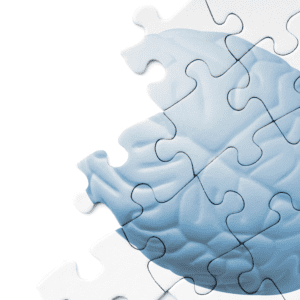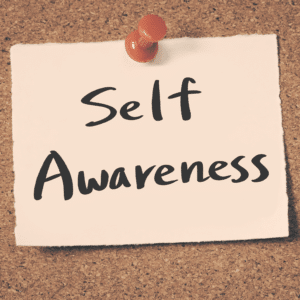概要
教育と学習において、テクノロジーは重要な役割を果たします。テクノロジーには、生徒にとって教室をより魅力的にし、内容の理解を向上させ、教師の仕事を楽にする可能性が秘められています。次のセクションでは、アメリカ全土の教室でこれがどのように実現されているかの例を示します。
テクノロジーは学生の学習方法を変えています。
Technology is changing the way students learn. It can be used to personalize learning, make the classroom more engaging for students, and even help them understand content more deeply than traditional materials do.
One of the most exciting ways technology is helping students learn is through personalization. Personalized learning means that each student receives instruction based on his or her own needs and abilities, which allows teachers to tailor their lessons accordingly. Teachers have access to data about each student’s progress so they can tailor lessons accordingly–for example, if a certain lesson isn’t working for one particular student in class because he doesn’t understand it well enough yet (or at all), then maybe another lesson would work better at this point in time instead of having him sit there frustrated while everyone else moves on without him!
デジタル学習ツールとリソースにより、教室が拡張されます。
Digital learning tools and resources expand the classroom. In a traditional classroom, students are required to follow along with their teachers and learn at a pre-determined pace. With technology, however, you can allow your students more freedom in how they access and use information from your course materials. This means that each student can learn at their own pace, regardless of whether they are working on their own or with other students around the world.
In addition to allowing for greater flexibility in terms of time management (e.g., allowing students who have busy schedules) these digital tools also provide an opportunity for self-guided learning which enables them to take ownership over their education by making decisions about what works best for them as learners
テクノロジーにより、生徒にとって教室の雰囲気がより魅力的になります。
テクノロジーにより、生徒にとって教室の雰囲気がより魅力的になります。
- 生徒はレッスンに集中することができ、携帯電話や他の人の会話など、周囲の物事に気を取られることはありません。
- テクノロジーにより、学生は本を読んだり、他の人の講義を聞いたりするよりも速く情報を得ることができるため、より効果的に学習できます。これは、周囲で何か他のことが起こっていること (他の学生が話しているなど) に気を取られずに長時間じっと座っていることが難しい低学年の学生にとって特に役立ちます。
- テクノロジーは、議論されているトピックの視覚的な表現を提供することで、学習をより魅力的なものにします。これにより、生徒は紙に書かれた単語を読んだり、他の人 (教師) が声に出して話すのを聞いたりするだけでなく、学習内容を目で見て確認することができます。たとえば、生物学の授業で植物を勉強する場合、さまざまな種類の植物がどのように見えるか、どこで最もよく育つかを単に読むのではなく、実際にすべての種類の写真とその説明を一緒に見ることができます。
テクノロジーの活用により、教室での生徒の参加が増加しました。
教師を対象にした最近の調査では、教室でテクノロジーを使用している教師は、使用していない教師よりも生徒の学習意欲が高いことが分かりました。タブレット、ノートパソコン、携帯電話などのテクノロジーを使用できると、生徒は授業に参加する可能性が高くなります。また、これらのデバイスを使用すると、授業中にメモを取ったり、授業時間外に周囲の状況を把握したりできるため、課題を期限内に完了する可能性も高くなります。また、授業計画にマルチメディア ツール (クイズなど) を使用する熱心な教師に教わったことがあるなら、新しい教材の学習がどれだけ簡単になるかがわかるでしょう。
テクノロジーを利用して、生徒の学習をパーソナライズすることができます。
Technology can be used to personalize learning for students. Students are no longer limited by their physical location or the time of day, and they can access online resources whenever they want. This allows them to learn at their own pace, which is an important factor in student success.
Technology also helps create an interactive classroom experience where students learn about new topics in an engaging way. For example, when using technology like virtual reality (VR), augmented reality (AR) or 3D modeling software you will find that your students become more engaged because they are able to interact with their environment while learning about something new!
新しいテクノロジーにより、教師や管理者はデータ収集が容易になります。
テクノロジーにより、教師は生徒の成績に関するデータを収集し、より適切に記録することが容易になります。さらに、テクノロジーは教師が生徒の行動や出席に関するデータを収集するのにも役立ちます。
テクノロジーは、従来の教材よりも生徒が内容をより深く理解するのに役立ちます。
Technology can help students learn more effectively. Technology has the potential to enhance student learning by enabling them to interact with content in new ways, and by providing opportunities for practice that is more engaging than traditional materials. For example, digital textbooks allow students to review key concepts and terms through interactive videos, animations and 3D models. They also provide multiple choice questions at the end of each chapter so students can test their understanding before moving on. This supports deeper understanding as well as retention of what was learned earlier in the text (Gardner & Clarke 2013).
In addition, technology allows you greater flexibility when designing instruction because it offers a range of methods for presenting information including auditory presentations such as podcasts or videos; visual presentations such as PowerPoint slideshows; interactive games or simulations; activities involving movement like virtual reality games where users physically move around an environment while wearing special goggles connected wirelessly via Bluetooth technology which display images generated by computer graphics cards installed inside personal computers called GPUs -Graphical Processing Units
テクノロジーは、教師の指導方法、生徒の学習方法、学校の運営方法において重要な役割を果たします。
Technology is a tool, not a solution. It can help teachers, students and schools by making things easier for them. But it is not a panacea that will solve all our problems just because we have new technology available to us.
Technology can make your job as an educator easier by providing access to resources that were previously difficult or impossible to obtain — especially in rural areas where there may be no library nearby. For example:
- Google ドライブを使用して生徒とドキュメントを共有すれば、生徒は自分ですべてを印刷する必要がなくなり、紙を節約できます。これにより、物理的なコピーを手元に置かずに、クラスの全員がいつでもドキュメントにアクセスできるようになります。
- 家族やグループなどのメンバーの一方が遠く離れた場所に住んでいる場合、Skype を対面でのコミュニケーションの代替手段として使用できます。こうすることで、物理的に同じ場所にいなくても (通常は必要ですが)、よりつながりを感じることができます。
まとめ
テクノロジーは学習方法の重要な部分であり、テクノロジーがなければ学習できなかったであろう生徒の学習効果を高めることができます。テクノロジーにより、教師は生徒ごとに授業をカスタマイズし、進捗状況を簡単に追跡することができます。生徒はカーン アカデミーや Edmodo などのデジタル ツールを使用して、教室の壁を越えて知識を広げることができます。これにより、他の方法では利用できなかったり、費用がかかったりするリソースにアクセスできるようになります。仮想現実シミュレーションなどの新しいテクノロジーは、生徒が実際の状況で試す前に、現実的な状況でコミュニケーションや問題解決などのスキルを練習できる没入型体験を提供します。









